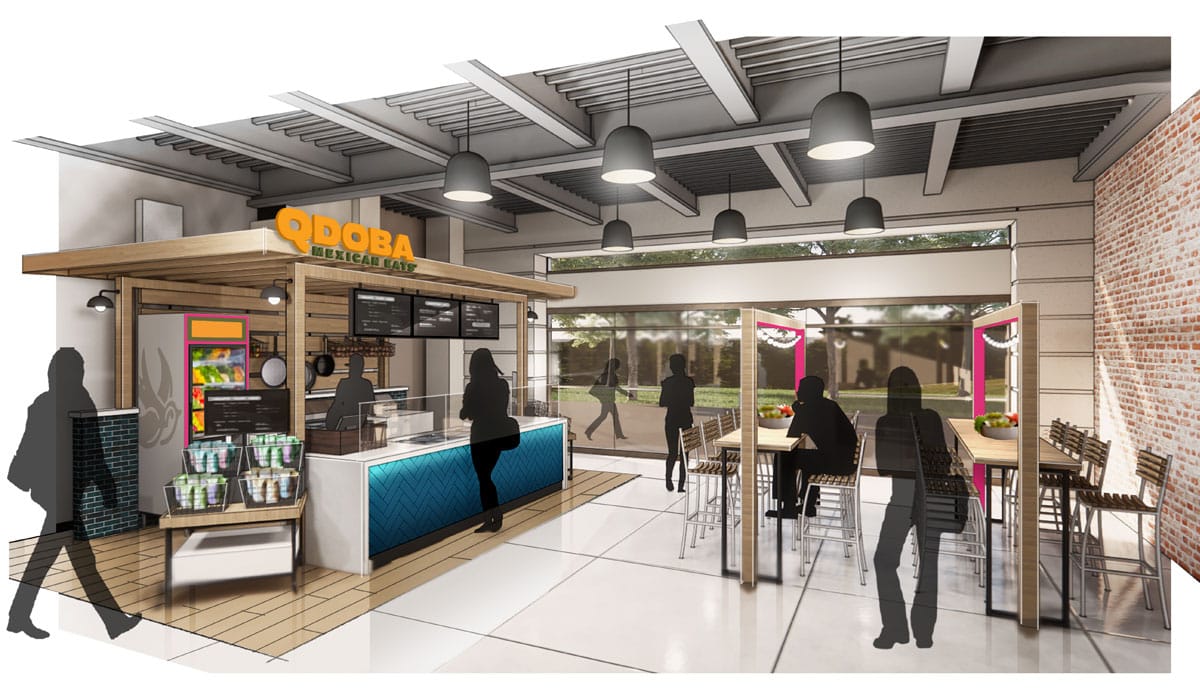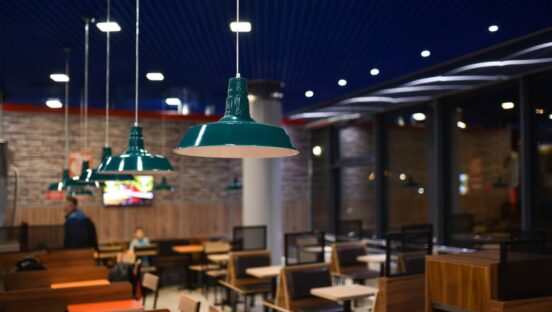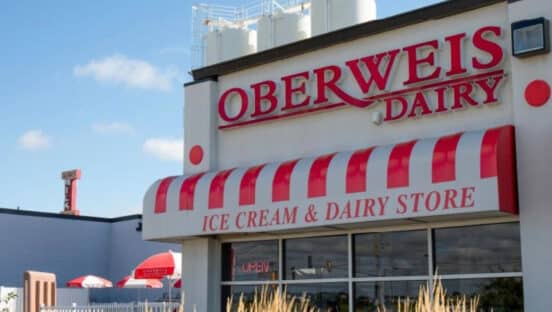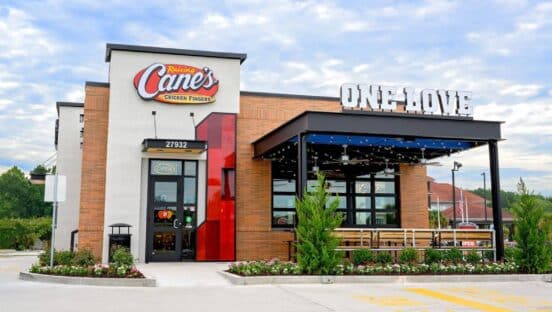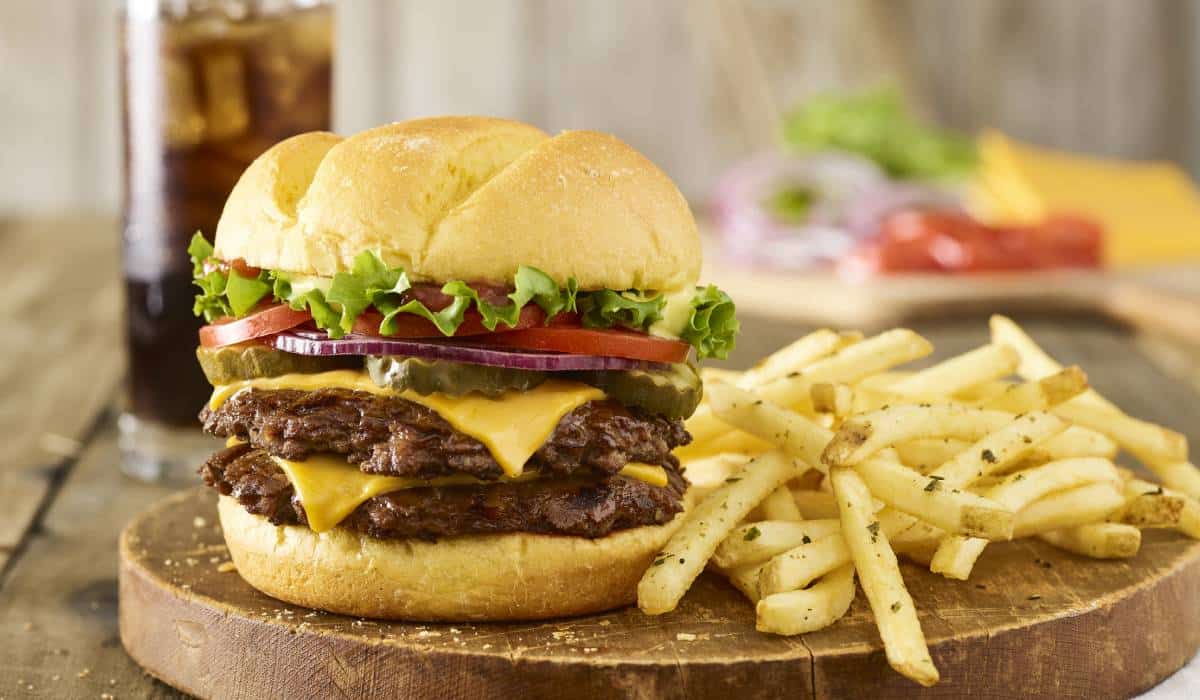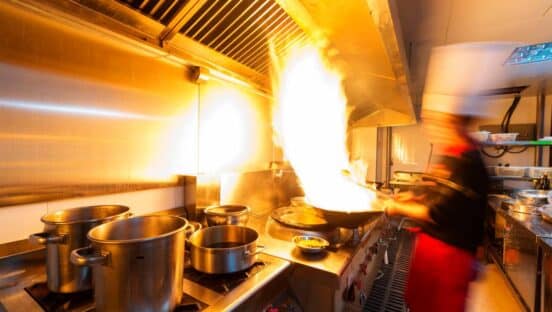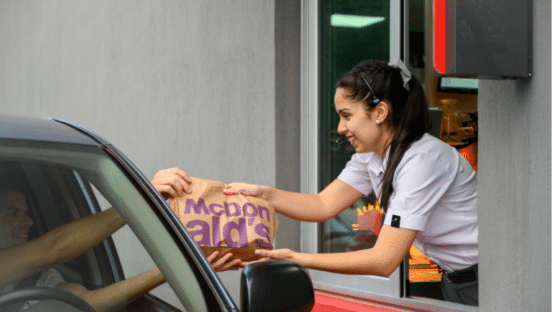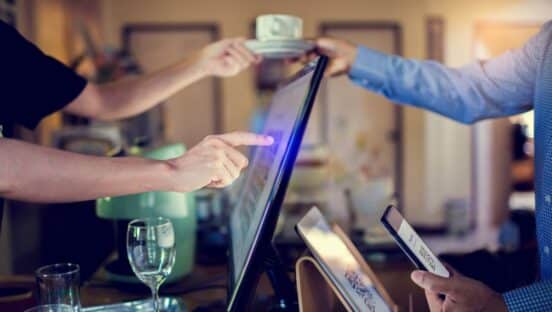The Restaurant of the Future 4.0 is about the creation of hybrid concepts that better meet the current consumer and operational needs but still have the potential for long-term growth. Some of these concepts may have seemed a little crazy back in March but creativity and innovation have no rules. As an industry, we are continuing to pivot toward the new normal, but we still do not exactly know what that will be. What we do know is that change is upon us and therefore we must also change.
In prior versions of “The Restaurant of the Future,” Kinetic12 identified what the Restaurant of the Future may look like and reviewed 15 components that we felt were crucial to success moving forward. We then detailed 10 new key focus areas that also provided a visual look at a pop-up outside dining area where curbside delivery would be used. In our third article, we looked at eight drivers of change and four areas that would not change. In this article, we dive deeper into the restaurant of the future to look at hybrid concepts.
CHECK OUT THE PAST ARTICLES:
The Restaurant of The Future 1.0: What the Concept of the Future Will Look Like After COVID-19
The Restaurant of the Future 2.0: Off-Premises, Simplification, and the Evolution of Dine-In
The Restaurant of the Future 3.0: Eight Drivers of Change in a ‘New Normal’
Many brands are now introducing and testing new hybrid concepts. They are well thought out and have been designed to incorporate elements of multiple restaurant segments in a smaller, more efficient footprint.
“I used to focus on trying to differentiate my brand by calling it polished, now I focus on just making it successful.”
It’s now fall, and cold weather is coming. Talking about what to do will not, unfortunately, generate sales. Consumers are resilient and they want to eat at restaurants or at least, get take-out from a restaurant. Those operators that pivot can make it happen and creativity is an essential ingredient.
THE RESTAURANT OF THE FUTURE 4.0
Here are 10 hybrid concepts that are being tested, evaluated, and implemented. It is not just about surviving, but also about thriving.
TAKING THE BEST OUT OF EACH SEGMENT
It was not that long ago that we were classifying restaurants in the same old quick-service, fast-casual, casual-dining, and fine-dining segments. Next, there became multiples of each segment with everyone trying to one up each other. What is “polished casual” anyway? Can we make something be quick service and deliver good food? COVID has opened our minds and led to new creative streams of revenue through unique hybrid ideas.
Flexibility continues to be crucial to the success of restaurants. The consumer remains the one that dictates change. They want restaurant quality food served how they want it, when they want it, both at the restaurant and off-premises. They expect their favorite restaurants to be versatile and accommodate their needs.
“If you can’t execute it well, don’t do it! You may not get a second chance!”

PARKING LOTS AND WHAT DO WITH THEM
Vacant parking lots are everywhere right now and they can be used to re-invent and re-energize current restaurants. We’ve seen the introduction of pop-up retail over the last few years which provided opportunities to fill vacant spaces in the short-term, which benefited retailers, landlords, and consumers. We are now looking at pop-up outside cafes, dining areas, entertainment venues, and express take-out areas.
“My restaurant was going to go under! I had no space for outside seating and then I looked across the street at a vacant auto repair space with a large parking lot in front. My sales now are greater than they were pre-COVID.”
A LOOK AT SOME RESTAURANT PROTOTYPES
Qdoba lays out a new drive thru, ghost kitchen, and walk-up window design
A four-lane drive thru from SOHO Juice, with a focus on app ordering
Burger King drops perhaps the most ambitious future prototype yet, complete with conveyor belt
Taco Bell goes big on digital ordering in “Go Mobile” design
Shake Shack’s first drive thru will have three lanes, no shortage of bold options
Consumers will go out of their way to frequent establishments if given a reason to be there. Outside cafes, for instance, with heaters and pleasant inviting environment will now work significantly longer into the season, which is clearly crucial for many operators this year.
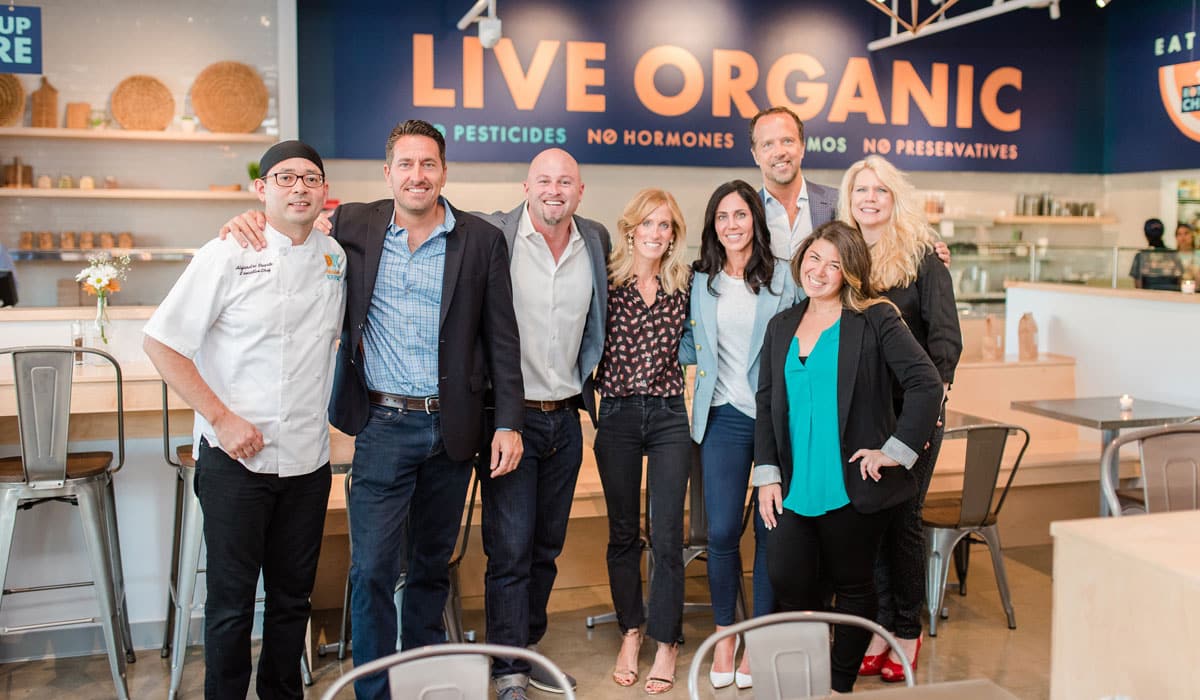
DRIVE-IN MOVIES AND ENTERTAINMENT
If operators have the extra parking space or have a location close by that has the space, they may have the opportunity to expand their revenue stream. Consumers are looking for entertainment and going to a movie inside of a building is not ideal. They want to eat restaurant quality food while they watch the movie and want to do both in a safe environment. What is better than getting food at your restaurant and eating in the comfort of their car while watching a movie?
“As a casual-dining restaurant, we were struggling to maintain our revenue. There was a big box store close by with an oversized parking lot. We collaborated with them to create an outside entertainment opportunity where our customers could purchase our food and eat in their cars while being entertained.”
The Restaurant of the Future can be built to accommodate outdoor dining year-round with some of it in a car, and having entertainment makes it a fun and unique experience.
YURTS (really)
A yurt is a portable igloo that can provide restaurants with outdoor dining during cold weather. Heat lamps keep patrons warm and operators can provide blankets to make the experience even more comfortable and unique. There is clearly a cost to these, but the upside is that you can have year-round seating and be different.
What is a Yurt? A dome-shaped igloo that is 8–12 feet in diameter that can accommodate four to eight guests within the igloo. They are 7 feet high and have a heater, carpets, tables, and chairs with cushions. A reservation is taken for a 90-minute time slot. And then after that, there is a 30-minute opening for staff to come in and do a deep clean of each igloo. The cleaning involves electrostatic sprayers and you replace everything in the igloo. It’s clean, fresh and sanitized.”
KITCHEN PODS
If you are looking to open a restaurant that is somewhere between brick and mortar and a food truck, kitchen pods are the way to go. A typical sized pod is 8.5 by 40 feet, costs about $150,000, plus equipment that is estimated a $75,000 to $100,000. All in, a lower cost than a traditional restaurant, and no costs to lease expensive real estate. Whether the pod is destined for leased or owned space, getting up and running is just a matter of connecting to utilities.
The beauty of kitchen pods is that owners have the flexibility to move the restaurant at any time. Unlike a truck, there is a sense that the pod is permanent. With seasonality and event contracts, the flexibility to move the restaurant allows operators to maximize their revenue.
GHOST KITCHEN/VIRTUAL KITCHEN/CLOUD KITCHEN/DARK KITCHEN
Most of these kitchens (more names to come…) were designed to be delivery-only restaurants that operate out of commercial kitchen spaces. Many of these restaurants use third-party delivery services like Uber Eats, Grubhub and DoorDash to facilitate delivery, but others have begun to do their own deliveries.
Some companies are building out warehouse spaces to house multiple virtual brands to drive greater scale. This allows consumers to order from multiple brands and for third-party delivery services to deliver multiple products that are picked up from one place.
Existing brick-and-mortar brands are also outsourcing their delivery production to ghost kitchens. This decreases the complexity that delivery and curbside creates in an operation that’s not designed for it.
Ghost kitchens are an interesting new segment that is still early in its evolution. Time will tell how well they ultimately do or whether they evolve into something else.
“The branding and food are real, but the restaurants do not exist elsewhere in the physical world.”
GHOST KITCHEN TO ENHANCE CASUAL- AND FINE-DINING EFFICIENCY
With limited meal periods and excessive kitchen space, new revenue streams were there to be had. Some have chosen to develop new virtual brands where menu items were prepared in the restaurant’s kitchen but offered only through delivery. The brand is strictly virtual and many have come from offshoots of products sold in the restaurants themselves.
Wings are an ideal virtual brand product, as you can see by the many brands hitting the market. They have been a hot restaurant item for years and many companies have taken advantage of the simplicity of the product and consumer popularity. Wings require only one protein SKU with menu variety coming from the availability of different sauces. They also travel well, can be eaten hot or cold and re-heat easily.
There is limited investment to develop and implement ghost kitchens at existing restaurants with only the addition of some specific equipment and technology, but overall, it has been a clear opportunity to ramp up sales for brands who have lost dine in business.
HIGH-END FOOD TRUCKS
When faced with limited indoor dining and no outside dining, many “chef-driven” brands were forced to close. At the same time, their loyal customers wanted their food and these chef-operators started to customize trucks that sold only their most popular items yet still delivered on many elements of their previous high-end experience.
“I purchased the truck on my own, and it was 75 percent a turnkey operation,” says one chef-owner.
To create a COVID-safe environment, he invested in POS equipment and an outward-facing terminal that enabled contactless payment. A computer screen inside the truck posts orders for the cooks. Total cost to get the concept up and running: $70,000.
CURBSIDE & PICK-UP
Not all restaurant consumers want their food delivered, believe it or not. There is still a certain level of experience consumers receive from going to a restaurant to pick up their order, even if the level of service is limited. As discussed previously, consumers also believe that their food will be hotter, safer, and higher quality if they pick it up themselves. In addition, food hygiene is a major issue for consumers. Removing the hand-off from the restaurant to the delivery driver, removes one of the potential areas of concern for the consumer. Consumers overwhelmingly like curbside pick-up and we will see this service continue to grow post-COVID.
We may also see curbside pickup added to ghost kitchen hybrids. They may be more limited than Kinetic12’s Restaurant of the Future but will incorporate curbside into the mix along with delivery. Success does not require AAA real estate or large footprints, but if it’s easy and good, the consumer will come back again.
SUBSCRIPTIONS
Panera took the initiative to provide a key benefit to loyal customers with their $8.99/month unlimited coffee offer. Clearly the goal was to drive additional food revenue when the customer came in for their coffee. Loss leaders is not a new promotion concept but this clearly was aggressive and different.
Loyalty programs have long been considered the way to get customers into restaurants on a regular basis, but the difference is that they did not pay in advance to be part of something. We are now seeing new subscriptions based programs and predict these will pick up considerably in the future. The key is to provide subscriptions that are an overwhelming value on “go-to” products. This will result in greater frequency and increased revenue.
“I tried Panera’s new unlimited coffee subscription and found it was too good to be true.”
WHAT NEXT: Restaurant of the Future 5.0: Winter approaches, what will work as the weather turns colder?
We have discussed pivoting, flexibility and much more related to adjusting to the evolving new normal, but the cold weather may bring us back to when COVID started. What have we learned that will make the next 3-6 months work? We will look at off-premises, creative outside dining and new revenue streams for now and for the future.
Bruce Reinstein and Tim Hand are partners with Kinetic12 Consulting, a Chicago-based Foodservice and general management consulting firm. The firm works with leading Foodservice suppliers, operators and organizations on customized strategic initiatives as well as guiding multiple collaborative forums and best practice projects. Their previous leadership roles in restaurant chain operations and at Foodservice manufacturers provide a balanced industry perspective.
Contact us to talk or learn more about the PIVOT PLAYBOOK and the 85-page comprehensive insight and solution report on the impact that COVID is having on our industry. Bruce@Kinetic12.com, or Tim@Kinetic12.com.

